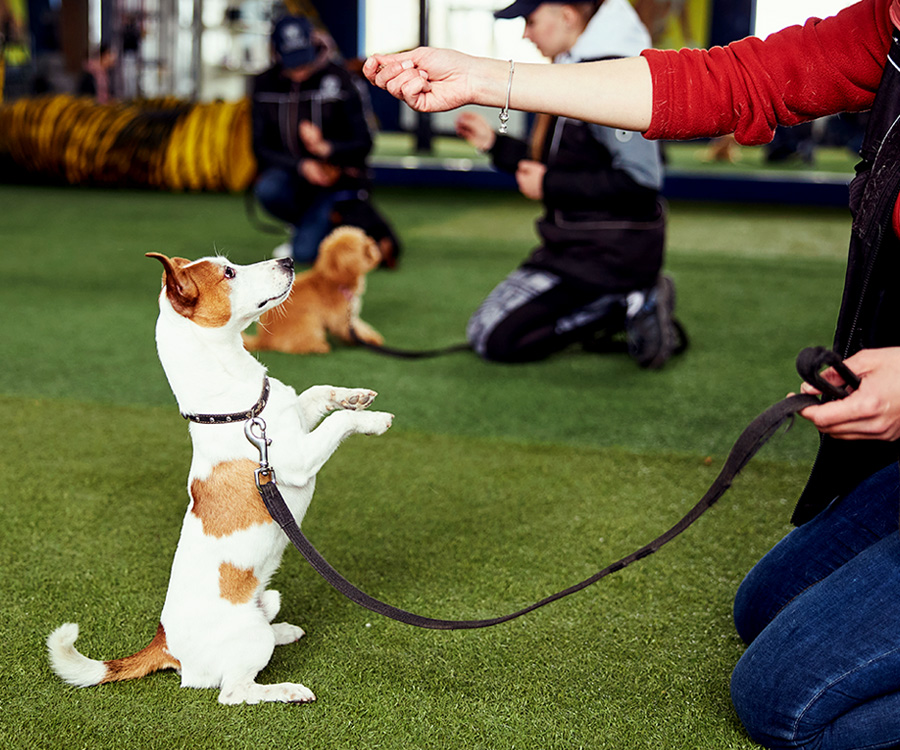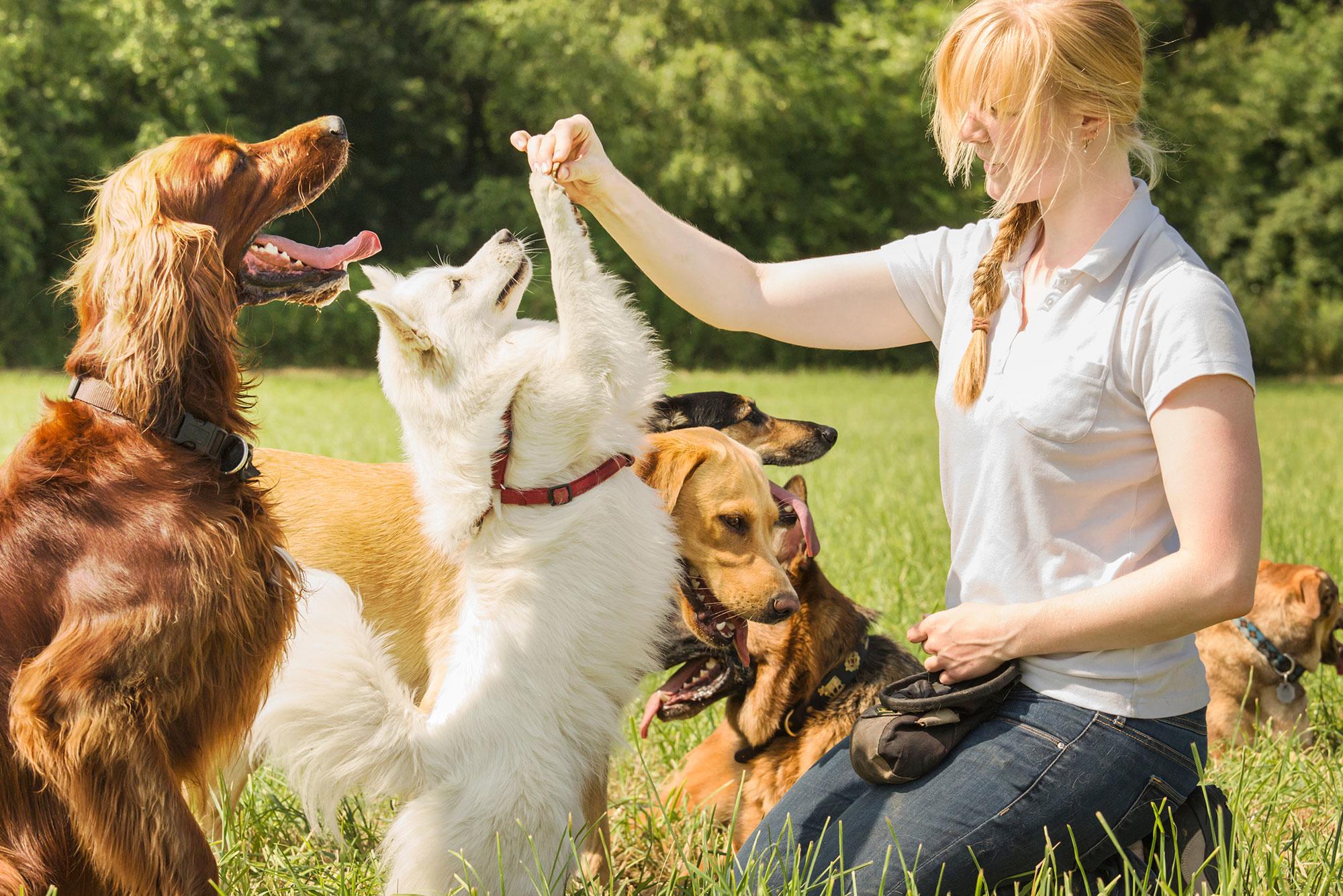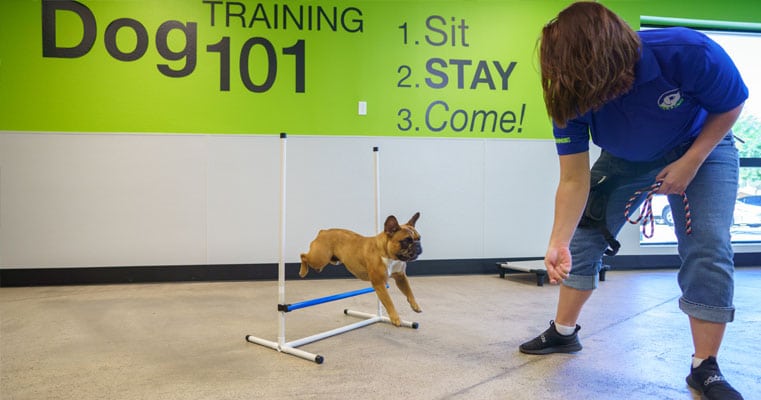Leading Dog Training Methods Every Owner Ought To Know

Positive Support Strategies
Making use of positive support strategies is vital for reliable pet training, as it promotes a trusting bond between the pet and the trainer. This approach concentrates on rewarding desirable habits instead of punishing unwanted ones, developing a setting helpful to finding out. Incentives can include treats, appreciation, or play, which inspire canines to repeat the behaviors that gain them these rewards.

Additionally, this method improves the dog's interest for training sessions. They are a lot more involved and responsive when dogs connect training with positive experiences. Dog training. Beyond immediate therapy, positive support encourages a collaborative connection between the pet dog and instructor, reducing anxiety and worry
To make the most of efficiency, it is crucial to deliver incentives without delay, ensuring the dog links the behavior with the support. Basically, favorable support strategies not just produce better-trained canines but additionally promote an unified partnership between pet dog and owner.
Clicker Training Method
The remote control training technique is a very effective strategy that builds on the concepts of positive support by including a distinctive noise to mark preferred behaviors. This technique utilizes a small portable tool that produces a clicking noise, permitting trainers to interact with their canines in a instant and clear fashion. When a pet dog does a behavior that the proprietor desires to urge, the clicker is turned on, followed by a reward, typically in the type of deals with or appreciation.
The secret to effective remote control training hinges on consistency and timing. It is crucial to click at the specific moment the preferred actions occurs, guaranteeing that the pet dog associates the noise with the activity and the succeeding reward. This approach not only improves communication yet additionally fosters a more powerful bond between the owner and the pet, as it motivates involvement and interaction throughout training sessions.
Clicker training can be related to a variety of commands and behaviors, from standard obedience to more complex methods. Its flexibility and efficiency make it a favored technique amongst professional trainers check out this site and family pet owners alike, leading the means for a trained and receptive canine friend.
Chain Training Essentials
Reliable leash training is essential for ensuring a risk-free and pleasurable walking experience for both pets and their proprietors. A flat collar may work for some canines, while others might benefit from a harness that lowers drawing.
Introduce your canine to the chain progressively, enabling them to this article discover it in a comfy setting. Technique loose-leash strolling once they are accustomed. This includes fulfilling your canine for strolling beside you as opposed to drawing in advance. Use deals with and praise to enhance desired habits, and make sure to stay calm and assertive.
If your pet begins to draw, stop walking promptly. Additionally, practice different strolling atmospheres to assist your pet dog adjust to interruptions.
Normal technique will solidify your dog's understanding of leash etiquette. Bear in mind that leash training is a continuous procedure; persistence and consistency will yield the most effective results, cultivating a positive experience for both you and your canine buddy.
Socialization Strategies
Socialization is an important element of dog training that must ideally start during puppyhood but can be advantageous at any kind of age. Effective socialization aids pet dogs create self-confidence and minimizes the possibility of behavior concerns. To apply effective socializing approaches, expose your dog to a selection of atmospheres, people, and various other animals.
Begin with controlled setups, such as pup courses or organized playgroups, where young dogs can engage securely. Gradually introduce your dog to new experiences, including different sounds, surface areas, and activities. Make certain these encounters are gratifying and positive to establish a complacency.
For grown-up pets or those doing not have direct exposure, begin with low-stress scenarios. Short, positive communications with pleasant people and tranquil pets can create positive organizations. Utilize deals with and praise to reinforce desirable behaviors during these experiences.

Consistency and Patience
Identifying the importance of consistency and persistence in dog training is essential for achieving long-term outcomes. Inconsistent training can lead to complication, making it difficult for the canine to comprehend behaviors or commands, inevitably impeding development.
Canines, like people, find out at their very own pace. This promotes a trusting relationship between the dog and owner, motivating a much more passionate and prepared student.
To cultivate consistency and patience, develop a normal training regular, utilize the very same commands, and ensure that all member of the family use the very same training concepts - Dog training. By doing so, you develop a secure environment for discovering, enabling your pet dog to establish and prosper into a mannerly buddy
Final Thought
To conclude, reliable dog training methods, such as positive support, remote control training, and correct leash training, are crucial for fostering a healthy owner-dog relationship. Furthermore, applying socializing approaches and maintaining consistency and patience throughout the training process adds substantially to a pet's general wellness. By incorporating these methods, pet dog owners can assist in the growth of well-adjusted, obedient animals, ultimately boosting the lifestyle for both the pet dog and the owner.
Amongst the most famous techniques are positive reinforcement, remote control training, and leash training, each offering one-of-a-kind benefits that contribute to a well-behaved pet. As we explore these fundamental approaches, it becomes obvious that mastering their nuances can dramatically impact the training experience and the canine's general actions.Making use of positive reinforcement methods is vital for effective dog training, as it cultivates a trusting bond in between the instructor and the pet dog.In conclusion, efficient dog training methods, such as positive support, clicker training, and appropriate leash training, are important for cultivating a healthy and balanced owner-dog relationship. By incorporating these approaches, canine owners can help with the development of well-adjusted, obedient family pets, inevitably improving the top quality of life for both the owner and the pet dog.